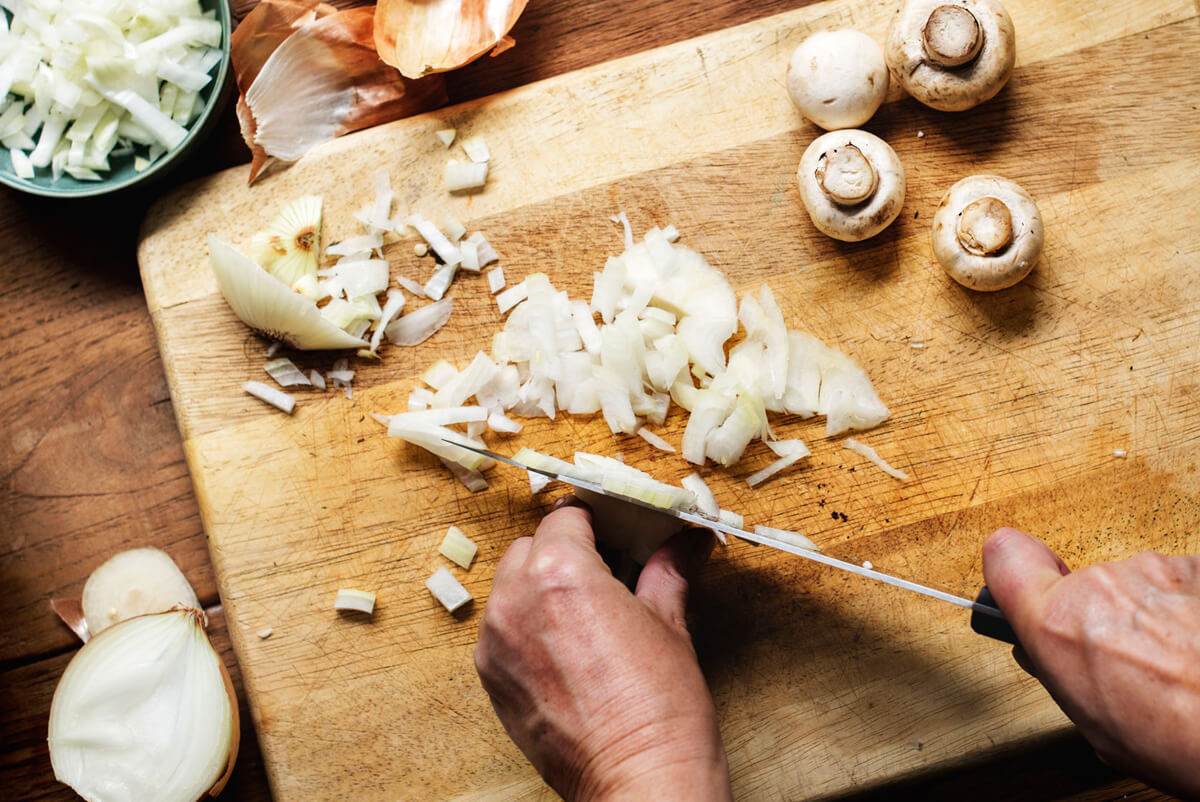Improving Your Knife Skills
One of the quickest ways to injure yourself in the kitchen is improperly using sharp objects, which makes learning how to use knives an essential part of basic cooking. Beyond safety, you'll also find that using proper techniques with different blades will make the completion of basic recipes a task that's not only more efficient, but also highly enjoyable!
- Choose the right knife: every cook should have a variety of knives on hand, and understand their application. The length and weight of the blade should be considered before starting any cutting task. Some examples include a chef's knife, which has a heavy, 8 to 10 inch blade and is used for chopping large, firm vegetables or meat carving. An 8 inch serrated knife is good for cutting bread, pies, or tomatoes. You'll want a 3.5-5 inch paring knife for delicate jobs like slicing herbs or fruit.
- Proper grips: how you hold your knife will go a long way in avoiding injury and making it easier to mince or chop items quickly. While your own comfort should be considered, a better level of stability and control will come from a grip high on the knife's handle, with your thumb and index finger gripping the heel of the blade.
- Focus: it might seem like cutting ingredients is a repetitive action that calls for little attention. However, it's vital to concentrate thoughtfully on chopping and plan things out carefully, otherwise you can really get hurt. Always factor in how small the pieces need to be and how you can minimize any effort. For example, when cutting an onion, you should first cut off the top, then slice the bulb in half and peel off the outer layers. Chop vertically, then horizontally, until you have the small bits you need.
- Blade care: Those who aren't experienced chefs often mistreat and neglect their knives, which is a costly mistake. Proper care of kitchen tools will make your work easier and safer. Knives should always be hand washed, rather than put in a dishwasher which can cause corrosion over time. Use the dull side of the blade to push ingredients around on the cutting board. Also, make sure your knives are sharpened regularly. Dull knives slow the preparation process and can lead to accidents.
- Know the basic cuts: it just takes a few simple motions to master the process of cutting ingredients in a quick and effective way. Remember that if a recipe calls for chopping, you need to make sure those pieces are all the same size to each other. Dicing means you are aiming for quarter-inch cubes, and mincing means you want to chop your ingredients as small as possible. If a recipe tells you to julienne, this means cutting your pieces into long, thin strips that resemble matchsticks. Slicing works well for vegetables or meat. Place the item on your cutting board and hold it with your free hand. The blade tip rests on the board, angling the knife upward. Pull the knife back repeatedly, keeping the tip in place on the board, as you push the food toward the blade.
Switch to the back-slice for finely cutting delicate products, like herbs. Stack the leaves and tightly roll them together. While holding the herbs with your other hand, you will again place the knife tip to the cutting board. Keep the knife at a lower angle as you pull back through the herbs. To mince these herbs, the rock chop works best. After slicing the ingredients, place them in a pile. Then, place the knife tip against the board and keep the blade steady with your other hand. Rocking the knife up and down will easily cut the pieces into fine bits.
By following these tips and putting in some time to practice, you'll become an expert slicer, dicer, chopper, and mincer in no time. Browse local produce markets to find fresh herbs, fruits and vegetables, and make sure to swing by Baumann's Fine Meats to grab your favorite meats. All this combined will make for a dinner your family won't soon forget!







